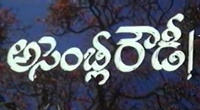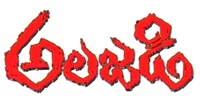

Right: A Shaiva Hindu with Tilaka (Tripundra).

In Hinduism, the tilaka (Sanskrit: ????) is a mark worn usually on the forehead, sometimes other parts of the body such as neck, hand or chest. Tilaka may be worn on a daily basis or for rites of passage or special religious occasions only, depending on regional customs.
The term also refers to the Hindu ritual of marking someone's forehead with a fragrant paste, such as of sandalwood or vermilion, as a welcome and expression of honor when they arrive.
Contents
Description
The tilaka is a mark created by the application of powder or paste on the forehead. Tilakas are vertical markings worn by Vaishnavites. The Vaishnava tilaka consists of a long vertical marking starting from just below the hairline to almost the end of one's nose tip, and they are also known as Urdhva Pundra. It is intercepted in the middle by an elongated U. There may be two marks on the temples as well. This tilaka is traditionally made with sandalwood paste.
The other major tilaka variant is often worn by the followers of Shiva, known by the names of Rudra-tilaka and Tripundra. It consists of three horizontal bands across the forehead with a single vertical band or circle in the middle. This is traditionally done with sacred ash from fire sacrifices. This variant is the more ancient of the two and shares many common aspects with similar markings worn across the world.
Shaktas, worshippers of the various forms of the Goddess (Devi), wear a large red dot of kumkum (vermillion or red turmeric) on the forehead.
Significance
Chapter 2 of the Kalagni Rudra Upanishad, a Shaiva traditional text, explains the three lines of a Tilaka as a reminder of various triads: three sacred fires, three syllables in Om, three gunas, three worlds, three types of atman (self), three powers in oneself, first three Vedas, three times of extraction of the Vedic drink Soma.
- The first line is equated to Garhapatya (the sacred fire in a household kitchen), the A syllable of Om, the Rajas guna, the earth, the external self, Kriy? – the power of action, the Rigveda, the morning extraction of Soma, and Maheshvara.
- The second streak of ash is a reminder of Dakshinagni (the holy fire lighted in the South for ancestors), the sound U of Om, Sattva guna, the atmosphere, the inner self, Iccha – the power of will, the Yajurveda, midday Soma extraction, and Sadashiva.
- The third streak is the Ahavaniya (the fire used for Homa), the M syllable in Om, the Tamas guna, Svarga – heaven, the Paramatman – the highest self (the ultimate reality of Brahman), Jnana – the power of knowledge, the Samaveda, Soma extraction at dusk, and Shiva.
These lines, states Antonio Rigopoulos, represent Shiva’s threefold power of will (icch??akti), knowledge (jñ?na?akti), and action (kriy??akti). The Tripu??ra described in this and other Shaiva texts also symbolizes Shiva’s trident (tri??la) and the divine triad of Brahm?, Vishnu, and Shiva.
The Vasudeva Upanishad, a Vaishnava tradition text, similarly explains the significance of three vertical lines in Urdhva Pundra Tilaka to be a reminder of Brahma, Vishnu, Shiva; the Vedic scriptures – Rigveda, Yajurveda and Samaveda; three worlds Bhu, Bhuva, Svar; the three syllables of Om – A, U, M; three states of consciousness – awake, dream sleep, deep sleep; three realities – Maya, Brahman and Atman; the three bodies – Sthula, Sukshma, and Karana.
Traditions
Different Hindu traditions use different materials and shapes to make the tilaka.
- Saivites typically mark their Tilak using vibhuti (ash) in three horizontal lines across the forehead. Along with the three horizontal lines, a bindu of sandalwood paste or a dot of red kumkum in the centre completes the Tilaka (tripundra).[2][3]
- Vaishnavas apply a Tilak with vermillion, clay, sandalwood paste (Chandan), or latter two mixed.[1] They apply the material in two vertical lines, which may be connected at the bottom, forming a simple U shape, often with an additional vertical red marking in the shape of a tulsi leaf inside the U shape. Their tilaka is called the Urdhva Pundra.[1] See also Srivaishnava Urdhva Pundra, the Srivaishnava tilaka.
- Ganapatya use red sandal paste (rakta candana).[13]
- Shaktas use kumkuma, or powdered red turmeric. They draw one vertical line or dot (not to be confused with Bindi used by Indian women from different religions).
- Honorary tilakas (Raja tilaka and Vira tilaka are usually applied as a single vertical red line. Raja tilaka will be used while enthroning kings or inviting prominent personalities. Vira tilaka is used to anoint victors or leaders after a war or a game.
- Swaminarayana tilaka is U-shaped in the middle of forehead along with the red dot in the middle of U (known as chandlo).
Cultural tradition
- Sikhs apply the tilak as well. The Darshan devotees apply reddish saffron tilak to the forehead. This tilak is of sandalwood paste and saffron applied as a dot stamp on forehead. Saint Baba Budha ji applied tilak to the first five Sikh Gurus.[14]
- Jains use Tilaka to mark the forehead of Jaina images with sandalwood paste, during Puja ceremonies.[15]
- Christians in India use Tilaka, both to mark special occasions and during their worship rites.[16]
- Hindus use the Tilaka ceremony, as a mark of honor and welcome to guests, something special or someone special.[4] It may also be used, for same reason, to mark idols at the start of a Puja (worship), to mark a rock or tree before it is cut or removed from its original place for artisan work, or a new piece of property.[4][17]
Types
The choice of style is not mandated in Hindu texts, and it is left to the individual and the regional culture, leading to many versions. The known styles include[18] Vijayshree – white tilaka urdhwapundra with a white line in the middle,[18] founded by Swami Balanand of Jaipur; Bendi tilaka – white tilak urdhwapundra with a white round mark in the middle,[19] founded by Swami Ramprasad Acharya of Badasthan Ayodhya; and Chaturbhuji tilaka – white tilak urdhwapundra with the upper portion turned 90 degrees in the opposite direction, no shri in the middle, founded by Narayandasji of Bihar, ascetics of Swarg Dwar of Ayodhya follow it. Sharma has named additional styles as, Vallabh Sampraday Tilak, Sri Tilaka of Rewasa Gaddi, Ramacharandas Tilaka, Srijiwarama ka Tilaka, Sri Janakraja Kishori Sharan Rasik Aliji ka Tilaka, Sri Rupkalajee ka Tilaka, Rupsarasji ka Tilaka, Ramasakheeji ka Tilaka, Kamanendu Mani ka Tilaka, Karunasindhuji ka Tilaka, Swaminarayana Tilaka, Nimbarka ka Tilaka and Madhwa ka Tilaka.[20]
Relationship to bindi
The terms tilaka and bindi overlap somewhat, but are not synonymous.[21] Among the differences:
- A tilaka is always applied with paste or powder, whereas a bindi may be paste or jewel.
- A tilaka is usually applied for religious or spiritual reasons, or to honour a personage, event, or victory. A bindi can signify marriage, or be simply for decorative purposes.
- A bindi is worn only between the eyes, whereas a tilaka can also cover the face or other parts of the body. Tilaka can be applied to twelve parts of the body: head, forehead, neck, both upper-arms, both forearms, chest, both sides of the torso, stomach and shoulder.
- Typically the bindi is worn only by women, whereas tilaka is worn by both men and women.
Terminology
It is also called tikli or sheether harr in Bengali, tika, or tilakam or tilak in Hindi; Sanskrit: ???? tilaka; Hindustani pronunciation: [t???l?k])[22]
In Nepal, Bihar and other regions, the tilakam is called a tik?/teeka (???? [??ka?]), and is a mixture of abir, a red powder, yoghurt, and grains of rice. The most common tikka is red powder applied with the thumb, in a single upward stroke.
Gallery
Green Tara as Prajnya paramita depicted with tilaka, c. 11th century
Vishnu with Shri Vaisnava tilaka marking
- Release Date :12:00am on Wednesday 1st January 1992
Watch movie Tilak online on Amazon
Watch movie Tilak online
Watch The Movie On Prime
Dil Hai Ke Manta Nahin Full HD Movie Download

Mard Full HD Movie Download

Muthu Full HD Movie Download

Unnal Mudiyum Thambi Full HD Movie Download

Banjaran Full HD Movie Download

Returns Of Kaartoos Full HD Movie Download

Hum Hain Kamal Ke Full HD Movie Download

Aamir Full HD Movie Download

Asha Jyoti Full HD Movie Download

Shiva Dada Full HD Movie Download

Mate Anidela Lakhe Phaguna Full HD Movie Download

Assembly Rowdy Full HD Movie Download

Cake-A Wedding Story Full HD Movie Download

Bad Mans River Full HD Movie Download

International Don Full HD Movie Download

The Green Mile Full HD Movie Download

Karimpoocha Full HD Movie Download

King Soloman Full HD Movie Download

Guru Sishyan Full HD Movie Download

Apoorva Sahodharalu Full HD Movie Download

Alajadi Full HD Movie Download


Download latest Movie from bollywood
- 1> baaghi 3
- 2> THE SKY IS PINK MOVIE FULL STORY AND REVIEW
- 3> Luka Chuppi
- 4> TO ALL THE BOYS I’VE LOVED BEFORE
- 5> Kabir Singh
- 6> Street Dancer 3D
- 7> Simmba
- 8> Gone Girl
- 9> The Girl Who Lived
- 10> Ludo
- 11> DILWALE DULHANIA LE JAYENGE
- 12> GUILTY
- 13> The Godfather
- 14> Adventures of Rusty
- 15> Sooryavanshi
- 16> Satyameva Jayate 2
- 17> Thappad
- 18> Bhool Bhulaiyaa 2
- 19> KGFChapter 2
- 20> Mardaani 2
- 21> Pinjar
- 22> Shivaji maharaj
- 23> Ek Villian 2
- 24> Hungama 2
- 25> Divergent
- 26> Mumbai Saga
- 27> The Internship
- 28> HIT (telugu)
- 29> Panga
- 30> The perfect date
- 31> 16 December
- 32> Gopala Gopala (Telugu)
- 33> Brahmastra
- 34> Gangubai Kathiawadi
- 35> Manmadhudu
- 36> Nenu local
- 37> Mahanati
- 38> Shatamanam bavathi
- 39> Lagaan
- 40> After
- 41> MOM
- 42> Shamshera
- 43> Raguvaran BTech
- 44> Khakee
- 45> The villain
- 46> OM
- 47> Mr. perfect
- 48> Bueatifull mind
- 49> Hichki
- 50> Gabbar Singh
- 51> Jogi
- 52> Before Sunrise
- 53> Before Sunset
- 54> Before Midnight
- 55> The Big Bull
- 56> Top Gun: Maverick
- 57> The Purge
- 58> The Sky is Pink
- 59> Laxmmi Bomb
- 60> Sadak 2
- 61> Sufna
- 62> Prithviraj
- 63> PK
- 64> Coolie No 1(2020)
- 65> Black Widow
- 66> Dear Zindagi
- 67> Dil Bechara
- 68> PHIR HERA PHERI
- 69> WAR
- 70> Dostana
- 71> RRR: Roudram Ranam Rudhiram
- 72> Maidan
- 73> Dabbang 3
- 74> Chhalaang
- 75> life as we know it
- 76> SherShaah
- 77> Sandeep Aur Pinky Faraar
- 78> Event Horizon
- 79> 83
- 80> Radhe: Your Most Wanted Bhai
- 81> Gunjan Saxena: The Kargil Girl
- 82> Mr India
- 83> Vivah
- 84> Anokha Bandhan
- 85> Ghost
- 86> Bhoot: Part One - The Haunted Ship
- 87> Haseen Dilruba
- 88> Laal Singh Chaddha
- 89> Qismat
- 90> Rajput
- 91> Drive
- 92> Dil Chahta Hai
- 93> Dil Ki Baazi
- 94> Dil Ka Rishta
- 95> Teesri Manzil
- 96> Dil
- 97> Love Aaj Kal
- 98> Khaali Peeli
- 99> Bunty Aur Babli 2
- 100> Atrangi Re
- 101> Gulabo Sitabo
- 102> Jodi
- 103> Suraj Pe Mangal Bhari
- 104> Deewana
- 105> Attack
- 106> Sardar Udham Singh
- 107> Toofan
- 108> THE LOVEBIRDS
- 109> Jersey
- 110> Ginny Weds Sunny
- 111> Thalaivi
- 112> Shiddat
- 113> Angels vs Zombies
- 114> Koi Mil Gya
- 115> Thank God
- 116> Bhuj: The Pride of India
- 117> Hum Aapke Hain Kaun
- 118> The Platform
- 119> Bird Box
- 120> Roohi Afzana
- 121> Torbaaz
- 122> Nikamma
- 123> World War Z
- 124> Extraction
- 125> Train to Busan
- 126> Life of Pi
- 127> SHAADI MEIN JROOR AANA
- 128> Himmat Aur Mehnat
- 129> To All The Boys: P.S. I Still Love You
- 130> Mimi
- 131> Good Newwz
- 132> Shubh Mangal Zyada Saavdhan
- 133> Raabta
- 134> Harry Potter and the Philosopher's Stone
- 135> Harry Potter and the Chamber of Secrets
- 136> Chhapaak
- 137> War of the Worlds
- 138> Harry Potter and the Prisoner of Azkaban
- 139> Harry Potter and the Goblet of Fire
- 140> MURDER MYSTERY
- 141> Shakuntala Devi
- 142> Bachchan Pandey
- 143> Jayeshbhai Jordar
- 144> Sheer Qorma
- 145> Saina
- 146> 'O' Pushpa I hate tears
- 147> Kedarnath
- 148> MS Dhoni The Untold Story
- 149> Chhichhore
- 150> Badhaai Ho
- 151> Unstoppable
- 152> Oz the Great And Powerful
- 153> The Girl on the Train
- 154> Haathi Mere Saathi 2020
- 155> The Conjuring: The Devil Made Me Do It
- 156> Gandhi Se Pehle Gandhi
- 157> The Song of Scorpions
- 158> Srimanthudu
- 159> Hello Guru Prema Kosame
- 160> Beauty and The Beast
- 161> Black Panther
- 162> Charlie and the Chocolate Factory
- 163> Bole Chudiyan
- 164> Fidaa
- 165> Duvvada Jagannadham
- 166> Bruce Lee: The Fighter
- 167> Hyper
- 168> Yaara
- 169> Red (2020)
- 170> Shivam
- 171> That Is Mahalakshmi
- 172> Nishabdham
- 173> Aashram 2020 web series
- 174> Laxmii
- 175> Mismatched
- 176> STUDENT OF THE YEAR 2
- 177> NAIL POLISH
- 178> Ramprasad Ki Tehrvi
- 179> KAAGAZ
- 180> 12 o Clock
- 181> The Power
- 182> bolo hau
- 183> Tribhanga
- 184> JAMUN
- 185> Madam Chief Minister
- 186> Maasaab
- 187> Aadhaar
- 188> Tanhaji
- 189> Bhaagi 3
- 190> Bhootnath
- 191> MALANG
- 192> Jai Mummy Di
- 193> Haathi Mere Saathi 2021
- 194> Shakeela
- 195> Unpaused
- 196> Annayya
- 197> Vamsoddharakudu
- 198> Mrugaraju
- 199> Narasimha Naidu
- 200> Sankranti
- 201> Manasu Maata Vinadhu
- 202> Anjaane
- 203> Apaharan
- 204> Bachke Rehna Re Baba
- 205> Bewafaa
- 206> Roohi
- 207> Radhe
- 208> Zindagi Khoobsoorat Hai
- 209> Yeh Mohabbat Hai
- 210> Yeh Kya Ho Raha Hai?
- 211> The Tomorrow War
- 212> DehradunDiary
- 213> Meri Shaadi Karaoo
- 214> Matruu Ki Bijlee Ka Mandola
- 215> No One Killed Jesica
- 216> Aag Ka Goola
- 217> Eight Million Dollars
- 218> Three Hundred
- 219> Cats and Dog
- 220> Decoy
- 221> Gold Rush
- 222> You Have Got Mail
- 223> Final Destination three
- 224> Tofan
- 225> Jungle
The valuable critic review of movie Tilak is availeble for downloadAs PCDS members You can use other service that depends on your credit balance and availability of movie. Credit balance earnig is very easy you can earn by using service of the pcds or let to your friends know about this.Request for Download movie Tilak
Are you looking for work in Movie in the bollywood ?Type of works in bollywood like Actor, Actress, singer, director, scriptwriter, Model, Play Back Singers, Script writer, Dialogue Writer, Audiography, Background Music, Costume Designer, Choreographer or junior artist
- Bollywood movies
- Latest Bollywood movies
- Download all bengali movies
- Download all bhojpuri movies
- Download all english movies
- Download all gujarati movies
- Download all hindi movies
- Download all kannada movies
- Download all malayalam movies
- Download all marathi movies
- Download all oriya movies
- Download all punjabi movies
- Download all tamil movies
- Download all telugu movies
- Bollywood action movies
- Bollywood adventure movies
- Bollywood animation movies
- Bollywood classical movies
- Bollywood comedy movies
- Bollywood crime movies
- Bollywood devotional movies
- Bollywood documentary movies
- Bollywood drama movies
- Bollywood family movies
- Bollywood fantasy movies
- Bollywood historical movies
- Bollywood history movies
- Bollywood horror movies
- Bollywood musical movies
- Bollywood mystery movies
- Bollywood mythological movies
- Bollywood patriotic movies
- Bollywood romance movies
- Bollywood romantic movies
- Bollywood sci-fi movies
- Bollywood social movies
- Bollywood spiritual movies
- Bollywood sports movies
- Bollywood suspense movies
- Bollywood thriller movies
- Bollywood war movies
- Hot actress list
- Hot gujarati actress list
- Hot tamil actress list
- Hot bhojpuri actress list
- Hot assam actress list
- Hot bihari actress list
- Hot jammu and kashmir actress list
- Hot gujarati actress list
- Hot haryana actress list
- Hot konkani actress list
- Hot marathi actress list
- Hot odia actress list
- Hot punjabi actress list
- Hot rajasthani actress list
- Hot kannada actress list
- Hot malayalam actress list
- Hot telugu actress list
- Hot tulu actress list
- Hot Actress list from Indian city
- Hot actress list from ahmedabad
- Hot actress list from alappuzha
- Hot actress list from bangalore
- Hot actress list from bangalore
- Hot actress list from bhopal
- Hot actress list from chandigarh
- Hot actress list from chennai
- Hot actress list from guwahati
- Hot actress list from hyderabad, india
- Hot actress list from indore
- Hot actress list from jaipur
- Hot actress list from kannur
- Hot actress list from kochi
- Hot actress list from kolkata
- Hot actress list from kollam
- Hot actress list from kottayam
- Hot actress list from kozhikode
- Hot actress list from lucknow
- Hot actress list from madurai
- Hot actress list from mangalore
- Hot actress list from mumbai
- Hot actress list from mysore
- Hot actress list from new delhi
- Hot actress list from patna
- Hot actress list from pune
- Hot actress list from thiruvananthapuram
- Hot actress list from thrissur
- Hot actress list from tiruchirappalli
- Hot actress list from vijayawada
- Hot actress list from visakhapatnam
- All Bollywood Movies
- Bollywood Celeb
- >Art Director
- >Audiography
- >Background Music
- >Banner
- >Choreographer
- >Cinematographer
- >Costume Designer
- >Dialogue Writer
- >Director
- >Distributor
- >Editor
- >Executive Producer
- >Hair Stylist
- >Lyricist
- >Music Director
- >Photographer
- >Playback Singers
- >Presenter
- >Producer
- >Production Company
- >Production Designer
- >Screenplay
- >Singer
- >Sound
- >Actor
- >Story Writer
- >Studio
- >Video Director
- >Miscellaneous
- >Publicity (pro)
- >Web Creator
- >Production Labs
- >Publicity Design
- >Publicity Stills
- >Writer
- >Miscellaneous Artists
- >Visual Effects
- >Reporter
- >Music Company
- >Shooting Studios
- >Picturised On
- >Line Producer
- >Co Producer
- >Asst Director
- >Casting Director
- >Cinematography
- >Choreography
- >Dialouge
- >Editing
- >Lyrics
- >Music
- >Story
- >Playback Singer Female
- >Playback Singer Male
- >Actor In A Comic Role (male/female)
- >Child Artiste
- >Ensemble Cast
- >Actor Popular Choice (male)
- >Actor Popular Choice (female)
- >Sa Re Ga Ma Pa Song Of The Year
- >Actor In Supporting Role
- >Actress In Supporting Role
- >Actor In Leading Role
- >Art Direction
- >Actress In Leading Role
- >Sound Recording
- >Costume Design
- >Special Effects
- >Action
- >Actor In A Negative Role
- >Lifetime Achievement Award
- >Cinematic Exellence (director)
- >Cinematic Exellence (male)
- >Cinematic Exellence (female)
- >International Male Icon
- >International Female Icon
- >Actor In A Supporting Role (male)
- >Actor In A Supporting Role (female)
- >Actor In A Comic Role
- >Playback Singer (male)
- >Playback Singer (female)
- >Most Promising Debut (female)
- >Most Promising Debut (male)
- >Most Promising Director
- >Sound Design
- >Lifetime Jodi
- >Marketed Film
- >Jury Award For Best Actor
- >Jury Award For Best Actress
- >Jury Award For Best Film
- >Jury Award For Best Director
- >Playback Singer(male)
- >Lifetime Acheivement Award (male)
- >Excellence Award
- >Jodi Award
- >Performer Of The Year
- >Presented By